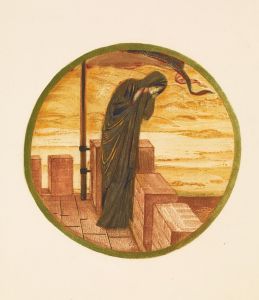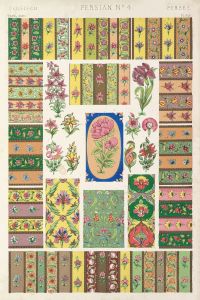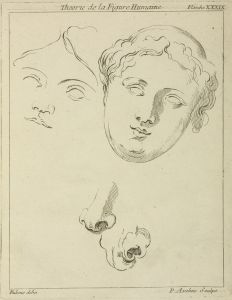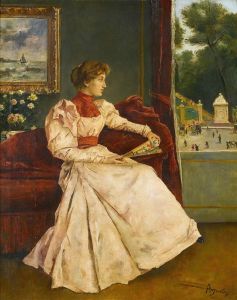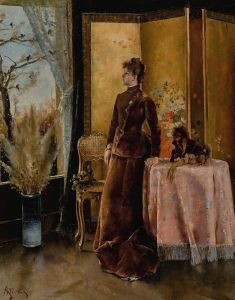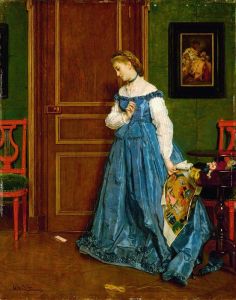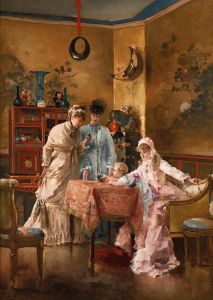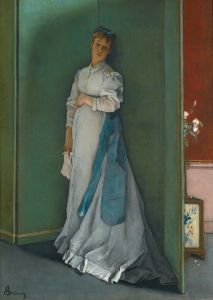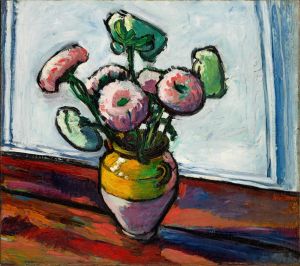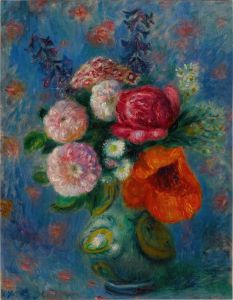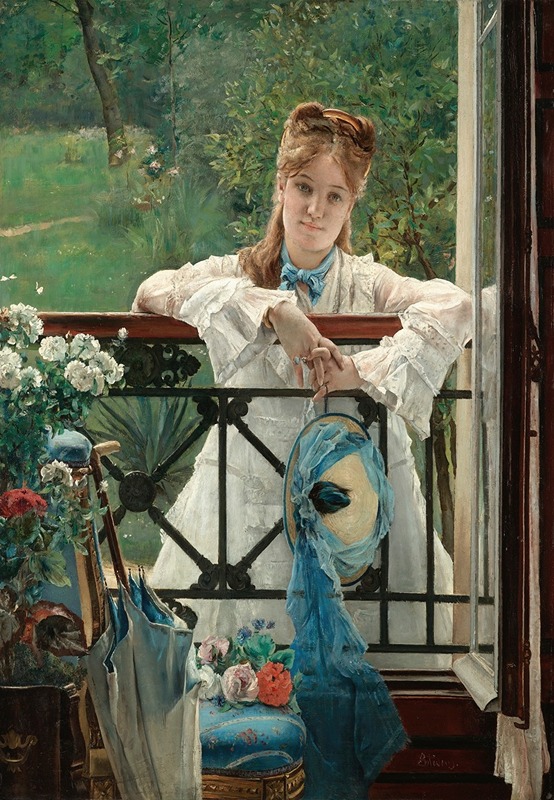
Un Bleuet
A hand-painted replica of Alfred Stevens’s masterpiece Un Bleuet, meticulously crafted by professional artists to capture the true essence of the original. Each piece is created with museum-quality canvas and rare mineral pigments, carefully painted by experienced artists with delicate brushstrokes and rich, layered colors to perfectly recreate the texture of the original artwork. Unlike machine-printed reproductions, this hand-painted version brings the painting to life, infused with the artist’s emotions and skill in every stroke. Whether for personal collection or home decoration, it instantly elevates the artistic atmosphere of any space.
Alfred Stevens was a renowned Belgian painter known for his exquisite portrayal of women and his ability to capture the subtleties of fashion and interior settings during the 19th century. One of his works, "Un Bleuet," exemplifies his skill in rendering delicate and intimate scenes. Although specific details about "Un Bleuet" are not extensively documented, we can explore the context of Stevens' career and artistic style to understand the significance of this painting.
Alfred Stevens was born in Brussels in 1823 and became a pivotal figure in the art world during his lifetime. He studied at the Académie Royale des Beaux-Arts in Brussels and later moved to Paris, where he became part of the vibrant art scene. Stevens was particularly influenced by the Realist movement and the works of contemporary artists such as Gustave Courbet. His paintings often depicted elegant women in domestic settings, capturing the essence of bourgeois life in the 19th century.
"Un Bleuet," like many of Stevens' works, likely features a female subject, as this was a recurring theme in his oeuvre. Stevens had a remarkable ability to portray the textures and colors of fabrics, which added a sense of realism and depth to his paintings. His attention to detail and his focus on the fashion and interiors of the time provide valuable insights into the cultural and social dynamics of the period.
Stevens' work was well-received during his lifetime, and he exhibited regularly at the Paris Salon. His paintings were appreciated for their technical precision and their ability to convey the elegance and sophistication of his subjects. Stevens' portrayal of women was not merely decorative; it often reflected the complexities of their roles in society and the changing attitudes towards femininity and domesticity.
The title "Un Bleuet" translates to "A Cornflower" in English. The cornflower is a delicate blue flower that could symbolize various themes, such as delicacy, fragility, or even remembrance. While the specific symbolism in Stevens' painting is not documented, the choice of title suggests a focus on the beauty and transience of life, a common motif in art.
Stevens' contribution to art extends beyond his paintings. He was a bridge between the Realist and Impressionist movements, influencing artists who followed. His works are held in high regard and can be found in major museums and private collections worldwide.
In summary, while detailed information about "Un Bleuet" is limited, understanding Alfred Stevens' artistic style and the context of his work provides insight into the painting's potential themes and significance. Stevens remains an important figure in art history, celebrated for his ability to capture the elegance and complexity of 19th-century life through his masterful depictions of women and their surroundings.





